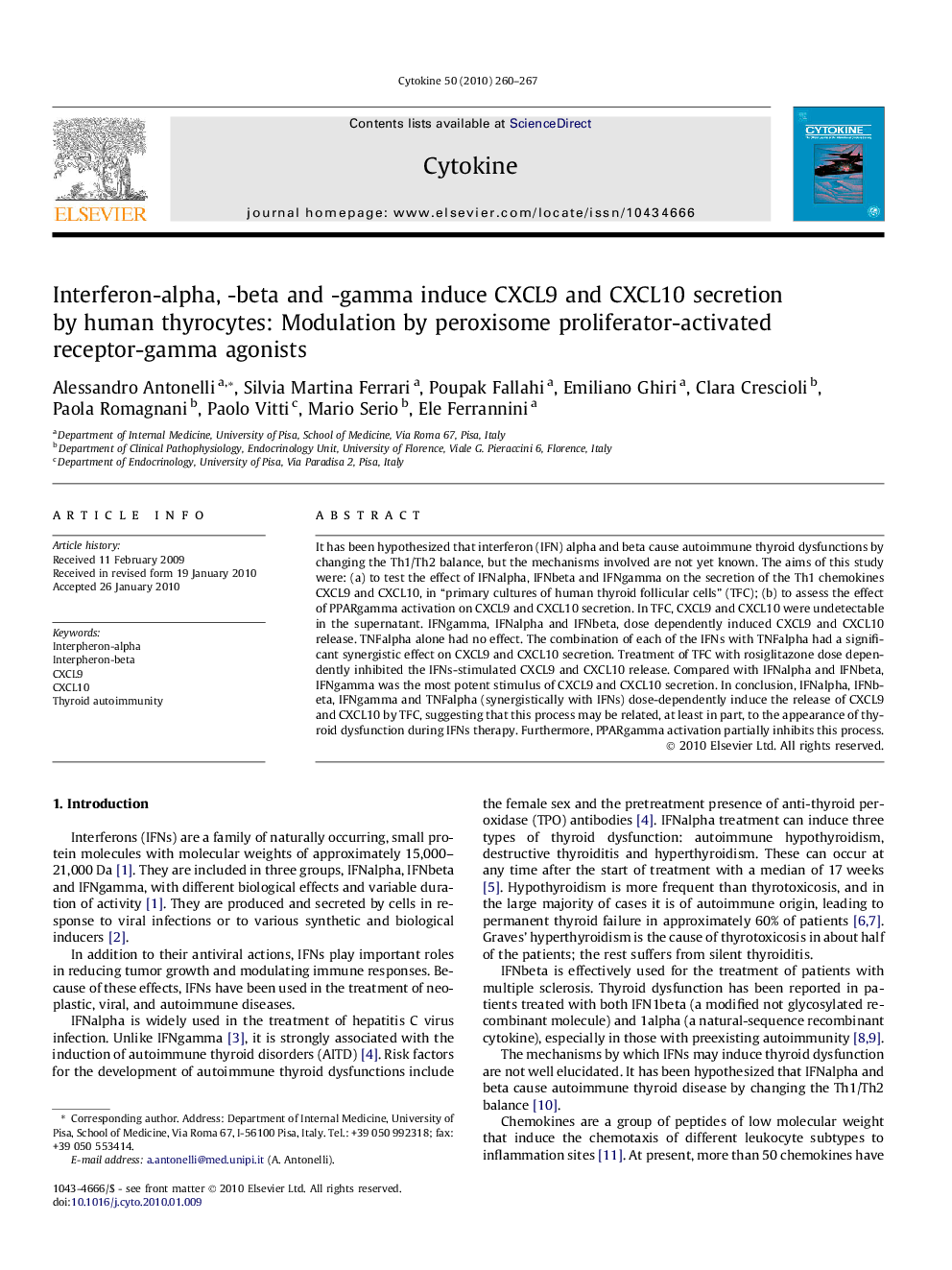| کد مقاله | کد نشریه | سال انتشار | مقاله انگلیسی | نسخه تمام متن |
|---|---|---|---|---|
| 2795186 | 1568739 | 2010 | 8 صفحه PDF | دانلود رایگان |

It has been hypothesized that interferon (IFN) alpha and beta cause autoimmune thyroid dysfunctions by changing the Th1/Th2 balance, but the mechanisms involved are not yet known. The aims of this study were: (a) to test the effect of IFNalpha, IFNbeta and IFNgamma on the secretion of the Th1 chemokines CXCL9 and CXCL10, in “primary cultures of human thyroid follicular cells” (TFC); (b) to assess the effect of PPARgamma activation on CXCL9 and CXCL10 secretion. In TFC, CXCL9 and CXCL10 were undetectable in the supernatant. IFNgamma, IFNalpha and IFNbeta, dose dependently induced CXCL9 and CXCL10 release. TNFalpha alone had no effect. The combination of each of the IFNs with TNFalpha had a significant synergistic effect on CXCL9 and CXCL10 secretion. Treatment of TFC with rosiglitazone dose dependently inhibited the IFNs-stimulated CXCL9 and CXCL10 release. Compared with IFNalpha and IFNbeta, IFNgamma was the most potent stimulus of CXCL9 and CXCL10 secretion. In conclusion, IFNalpha, IFNbeta, IFNgamma and TNFalpha (synergistically with IFNs) dose-dependently induce the release of CXCL9 and CXCL10 by TFC, suggesting that this process may be related, at least in part, to the appearance of thyroid dysfunction during IFNs therapy. Furthermore, PPARgamma activation partially inhibits this process.
Journal: Cytokine - Volume 50, Issue 3, June 2010, Pages 260–267